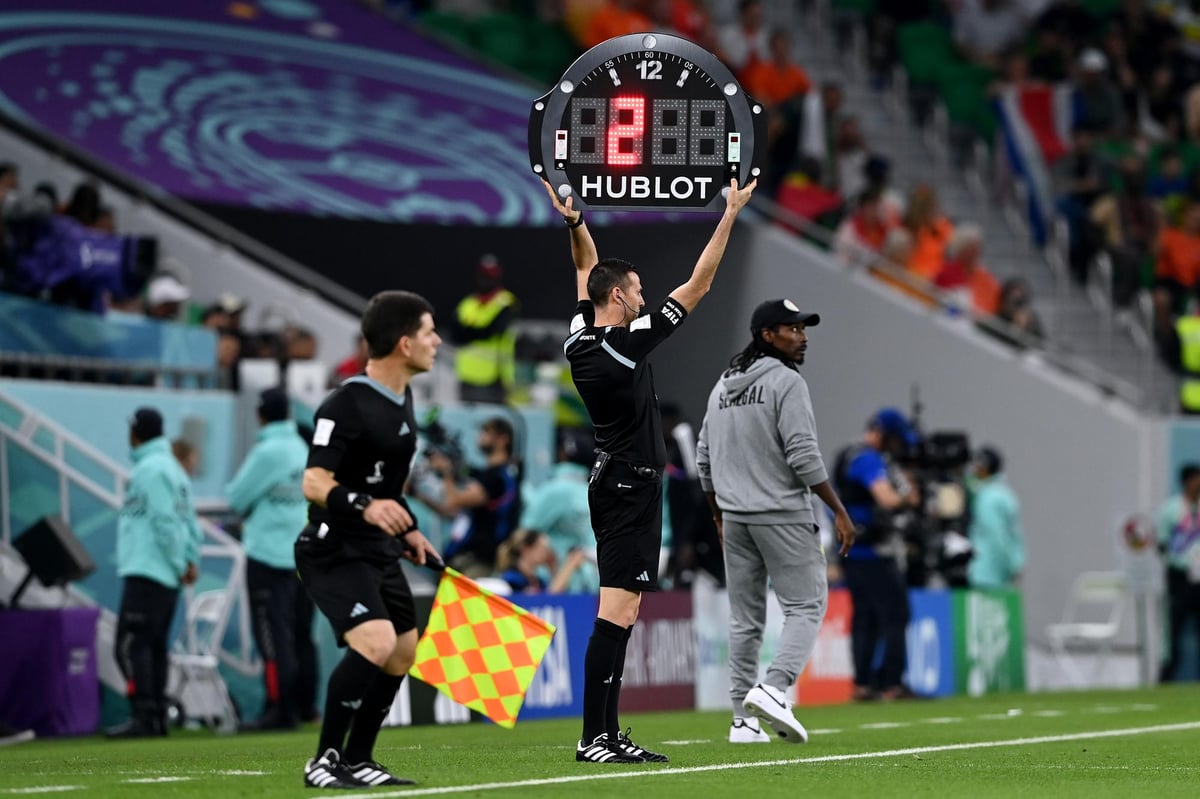
The stoppage time has been one of the most talking topics around the 2022 FIFA World Cup in Qatar. Here’s all about it.
The issue with long matches at the 2022 World Cup
The unusually long World Cup matches are one of the most talked about things. The England v Iran game was 117 minutes long. Moreover, just one of the first eight games finished within the 100-minute mark. As per game stats from Opta, a football firm, the top four single halves with the most stoppage times were on the second day of the Qatar World Cup. Moreover, about 80 percent of the first 25 matches went for a minimum of 100 minutes. However, the long games are not accidental but as per FIFA’s plan, FIFA was aiming to address the problem of loss of playing time due to breaks. The governing body also wanted to allow fans to savor the action to its maximum.
What is stoppage time?

Football uses a running clock that doesn’t pause when the game is interrupted unlike games like hockey and basketball. As per the rules of the International Football Association Board’s Laws of the Game, referrers can add extra time for disciplinary sanctions, removal or injury of a player(s), delays due to review, wastage of time, goal celebrations, etc. It is also known as additional or injury time. This is calculated by accounting for all interruptions during the half and is added at the end of each half.
However, the game can be longer than the added time. But, it is if the referee feels there were additional interruptions during injury time. As per the law, the referee should not be compensated for a timekeeping error in the first half by extending the second. However, the stoppage time for second halves is traditionally longer than the first. It is believed to first originate following a game between Aston Villa and Stoke City, two English clubs in 1891.
Before the 2022 World Cup began, Pierluigi Collina stated that added time of more than eight to nine minutes will be a norm. Collina is the chairman of the FIFA referees’ committee. “We recommended our referees to be very accurate in calculating the time to be added at the end of each half to compensate for time lost due to a specific kind of incident. What we want to avoid is to have a match with 42, 43, 44, and 45 minutes of active play. This is not acceptable,” stated Collina. “So, imagine in a half there are two or three goals scored (by a team). And it’s easy to lose five or six minutes and this team (the opposition) must be compensated at the end,” he added.






